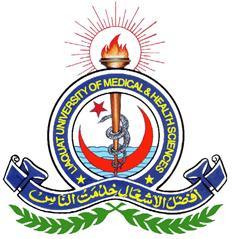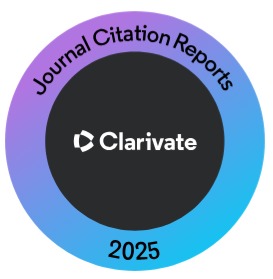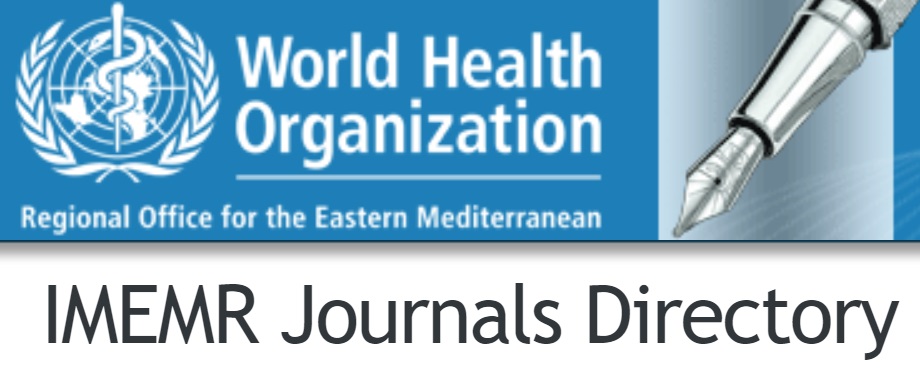Frequency and Antifungal Susceptibility of Candida Albicans and Non-albicans Candida Isolates from Diabetic Foot Ulcer at Tertiary Care Hospitals of Peshawar
Keywords:
Diabetes Mellitus, Fungal susceptibility, antifungal, diabetic foot ulcerAbstract
OBJECTIVE: To study the frequency and antifungal susceptibility of the Candida albicans and non-albican species in diabetic foot infections from samples collected in a tertiary care hospital of district Peshawar.
METHODOLOGY: This cross-sectional study was conducted from March 2020 to February 2021 in Khyber Teaching Hospital and Hayatabad Medical Complex, Peshawar. Specimen for culture swabs or tissue from diabetic foot ulcers was taken using aseptic methods. If pus was absent in the wound, ulcer scraping was collected. One tissue sample was soaked in 10% KOH for microscopy, while the second sample was used for fungal culture and sensitivity using Sabouraud dextrose agar.
RESULTS: Of the 600 samples, 200 patients had diabetic foot ulcers with positive fungal culture from Males 102(51%) and Females 98(49%). The age range was 40-78 years. The frequency of C. albicans, C. dubliniensis, C. famata, C. glabrata, C. parapsilosis, and C. lusitaniae was 23(11.5%), 27(13.5%), 19(9.5%), 19(9.5%), 88(44%) and 24(12%). C. albicans was the most common fungal species. Antifungal susceptibility testing was done, and resistance to drugs like Amphotericin, Caspofungin, Fluconazole, Flucytosine, Itraconazole, Micafungin, Voriconazole which was 6.5%, 16%, 25.5%, 5.5%, 3%, 22.5%, 21% respectively. Resistance to Fluconazole, Micafungin and Voriconazole was the highest among all commonly used antifungal drugs.
CONCLUSION: Fungal infection in diabetic foot ulcers usually does not respond to antibiotics. Candia albicans and non-albicans spp are also associated with diabetic foot ulcer infection and inflammation, and these fungi have the highest resistance to commonly used antifungal agents.
References
Aslam R, Suhail S, Sajid R, Younis B. Type 2 Diabetes Mellitus (T2DM) in Pakistan: Prevalence, Trends and Management Strategies. Ann King Edward Med Univ. 2022; 28(2): 247-254. doi: 10.21649/akemu.v28i2.5117.
Aamir AH, Ul-Haq Z, Mahar SA, Qureshi FM, Ahmed I, |Jawa A et al. Diabetes Prevalence Survey of Pakistan (DPS-PAK): prevalence of type 2 diabetes mellitus and prediabetes using HbA1c: a population-based survey from Pakistan. BMJ Open. 2019; 9: e025300. doi: 10.1136/bmjopen-2018-025300.
Sohal T, Sohal P, King-Shier KM, Khan NA. Barriers and Facilitators for Type-2 Diabetes Management in South Asians: A Systematic Review. PLoS One. 2015 Sep 18; 10(9): e0136202. doi: 10.1371/journal.pone.0136202.
Berbudi A, Rahmadika N, Tjahjadi AI, Ruslami R. Type 2 Diabetes and its Impact on the Immune System. Curr Diabetes Rev. 2020; 16(5): 442-449. doi: 10.2174/1573399815666191024085838.
Musyoki VM, Mutai W, Ngugi N, Otieno F, Masika MM. Speciation and antifungal susceptibility of Candida Isolates from diabetic foot ulcer patients in a tertiary hospital in Kenya. Pan Afr Med J. 2022; 41: 34. doi:10.11604/pamj.2022.41.34.30815.
Rastogi A, Sukumar S, Hajela A, Mukherjee S, Dutta P, Bhudada SK et al. The microbiology of diabetic foot infections in patients recently treated with antibiotic therapy: a prospective study from India. J Diabetes Complications. 2017; 31(2): 407-412. doi:10.1016/j.jdiacomp. 2016.11.001.
Nyamu PN, Otieno CF, Amayo EO, Mcligeyo SO. Risk factors and prevalence of diabetic foot ulcers at Kenyatta National Hospital, Nairobi. East Afr Med J. 2003; 80(1): 36-43. doi: 10.4314/eamj.v80i1.8664.
Wang X, Yuan CX, Xu B, Yu Z. Diabetic foot ulcers: Classification, risk factors and management. World J Diabetes. 2022; 13(12): 1049-1065. doi: 10.4239/wjd.v13.i12.1049.
Baig MS, Banu A, Zehravi M, Rana R, Burle SS, Khan SL et al. An Overview of Diabetic Foot Ulcers and Associated Problems with Special Emphasis on Treatments with Antimicrobials. Life (Basel). 2022; 12(7): 1054. doi: 10.3390/life12071054.
Karmaker M, Sanyal S, Sultana M, Hossain M. Association of bacteria in diabetic and non-diabetic foot infection - an investigation in patients from Bangladesh. J Infect Public Health. 2016; 9(3): 267-77. doi: 10.1016/j.jiph.2015.10.011.
Saseedharan S, Sahu M, Chaddha R, Pathrose E, Bal A, Bhalekar P et al. Epidemiology of diabetic foot infections in a reference tertiary hospital in India. Braz J Microbiol. 2018; 49(2): 401-6. doi: 10.1016/j.bjm.2017.09.003.
Sanches JM, Zhao LN, Salehi A, Wollheim CB, Kaldis P. Pathophysiology of type 2 diabetes and the impact of altered metabolic interorgan crosstalk. FEBS J. 2023; 290(3): 620-648. doi: 10.1111/febs.16306.
Edmonds M, Manu C, Vas P. The current burden of diabetic foot disease. J Clin Orthop Trauma. 2021; 17: 88-93. doi: 10.1016/j.jcot.2021.01.017.
White TC, Findley K, Dawson TL Jr, Scheynius A, Boekhout T, Cuomo CA et al. Fungi on the skin: dermatophytes and Malassezia. Cold Spring Harb Perspect Med. 2014; 4(8): a019802. doi: 10.1101/cshperspect.a019802.
Lee Y, Puumala E, Robbins N, Cowen LE. Antifungal Drug Resistance: Molecular Mechanisms in Candida albicans and Beyond. Chem Rev. 2021; 121(6): 3390-3411. doi: 10.1021/acs.chemrev.0c00199.
Silva S, Rodrigues CF, Araújo D, Rodrigues ME, Henriques M. Candida Species Biofilms' Antifungal Resistance. J Fungi (Basel). 2017; 3(1): 8. doi: 10.3390/jof3010008.
Lockhart SR, Etienne KA, Vallabhaneni S, Farooqi J, Chowdhary A, Govender NP. Simultaneous Emergence of Multidrug-Resistant Candida auris on 3 continents Confirmed by Whole Genome Sequencing and Epidemiological Analyses. Clin Infect Dis. 2017; 64(2):134-140. doi: 10.1093/cid/ciw691.
Gautam G, Rawat D, Kaur R, Nathani M. Candidemia: Changing dynamics from a tertiary care hospital in North India. Curr Med Mycol. 2022; 8(1): 20-25.
doi: 10.18502/cmm.8.1.9210.
Arun CS, Raju P, Lakshmanan V, Kumar A, Bal A, Kumar H. Emergence of Fluconazole-resistant Candida Infections in Diabetic Foot Ulcers: Implications for Public Health. Indian J Community Med. 2019; 44(Suppl 1): S74-S76. doi: 10.4103/ijcm.IJCM_111_19.
Kumar D, Banerjee T, Chakravarty J, Singh SK, Dwivedi A, Tilak R. Identification, antifungal resistance profile, in vitro biofilm formation and ultrastructural characteristics of Candida species isolated from diabetic foot patients in Northern India. Indian J Med Microbiol. 2016; 34(3): 308-14. doi: 10.4103/0255-0857.188320.
Terças AL, Marques SG, Moffa EB, Alves MB, de Azevedo CM, Siqueira WL et al. Antifungal Drug Susceptibility of Candida Species Isolated from HIV-Positive Patients Recruited at a Public Hospital in São Luís, Maranhão, Brazil. Front Microbiol. 2017; 8: 298. doi: 10.3389/ fmicb.2017.00298.
Khadka S, Sherchand JB, Pokhrel BM, Parajuli K, Mishra SK, Sharma S et al. Isolation, speciation and antifungal susceptibility testing of Candida isolates from various clinical specimens at a tertiary care hospital Nepal. BMC Res Notes. 2017; 10(1): 218. doi: 10.1186/ s13104-017-2547-3.
Lindberg E, Hammarstrom H, Ataollahy N, Kondori N. Species distribution and antifungal drug susceptibilities of yeasts isolated from the blood samples of patients with candidemia. Sci Rep. 2019; 9(1): 3838. doi: 10.1038/s41598-019-40280-8.
El-Ganiny AM, Yossef NE, Kamel HA. Prevalence and antifungal drug resistance of nosocomial Candida species isolated from two university hospitals in Egypt. Curr Med Mycol. 2021 Mar; 7(1): 31-37. doi: 10.18502/cmm.7.1.6181.
Khaliq S, Ali H. Diagnostic Utility of Bone Marrow Biopsy/Bone Marrow Culture in Pyrexia of Unknown Origin: A Ten-Year Retrospective Analysis. J Liaquat Uni Med Health Sci. 2023; 22(1): 40-43. doi.10.22442/jlumhs.2023.00989.
Downloads
Published
How to Cite
Issue
Section
License
Copyright (c) 2024 Journal of Liaquat University of Medical & Health Sciences

This work is licensed under a Creative Commons Attribution-NonCommercial-ShareAlike 4.0 International License.
Submission of a manuscript to the journal implies that all authors have read and agreed to the content of the undertaking form or the Terms and Conditions.
When an article is accepted for publication, the author(s) retain the copyright and are required to grant the publisher the right of first publication and other non-exclusive publishing rights to JLUMHS.
Articles published in the Journal of Liaquat University of Medical & health sciences are open access articles under a Creative Commons Attribution-Noncommercial - Share Alike 4.0 License. This license permits use, distribution and reproduction in any medium; provided the original work is properly cited and initial publication in this journal. This is in accordance with the BOAI definition of open access. In addition to that users are allowed to remix, tweak and build upon the work non-commercially as long as appropriate credit is given and the new creations are licensed under the identical terms. Or, in certain cases it can be stated that all articles and content there in are published under creative commons license unless stated otherwise.























